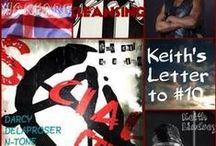‘I was in a class all of my own, beneath everybody else along with the dogs and the pigs’

Marie O'Halloran
Last Updated: Sunday, November 17, 2013, 22:22
A campaign has been launched for recognition of mixed-race survivors of institutional abuse who believe they suffered racism while in State care.
Rosemary Adaser and Evon Brennan of the campaign group Call
to Action Mixed Race Irish, have 20 members, but believe there are
about 200 Irish people of mixed race who were in institutional care here
between the 1950s and 1980s.
Ms Brennan,
a London-based singer-songwriter, said they were looking at the
“colour-specific nature of abuse”. That abuse “has been under the radar
all these years” and they want an acknowledgement that “Ireland in the ’50s and ’60s was a racist country”.
They
also want to reach out to other mixed-race ex-institution Irish and ask
any such survivors to contact them by email: mixedraceirish@gmail.com
or through the charity One in Four.
Ms Adaser
said: “The key point is that if you were mixed race back in the ’50s and
’60s you were 99 per cent sure of being put in an institution.”
Put
into State care at the age of three months, she was in homes on the
Navan Road, Dublin, and spent 11 years in St Joseph’s, Kilkenny, where
her baby son was forcibly taken from her by the nuns when she was 17.
‘Performing monkey’
“I have absolutely nothing good to say about it. I was the only black girl there, seen as an oddity, treated as an alien, at best a performing monkey, at worst a savage, a savage to be civilised.
“I have absolutely nothing good to say about it. I was the only black girl there, seen as an oddity, treated as an alien, at best a performing monkey, at worst a savage, a savage to be civilised.
“I
was in a class all of my own, beneath everybody else along with the
dogs and the pigs on the farm. That’s where I was told I belonged.”
Her
father was an African chief educated at the Sorbonne in Paris and her
mother worked at the hospital. “They were decent folks,” she said.
In
the institutions they also had to contend with stereotyping around
sexuality of people of colour. “As young women that was very, very
hard.”
Ms Adaser said she had met her mother years
later. “She really felt she had broken the code by falling in love with
a black man. His family didn’t want us because Ghana was coming into independence . . . but her family didn’t want us either.”
She has a twin brother, now living in China, and was subsequently reunited with her son, who lives in Cork.
Ms Brennan, who never knew her parents, was raised with her twin sister Carol on the Navan Road, in Ballaghaderreen, Co Roscommon, and Banada Abbey,
Co Sligo. Ballaghaderreen “was the most traumatic, darkest place of
memory, where most damage was endured because of my colour”.
‘The carers wear gloves’“You are refused to be cared for, to be looked after, to be washed because of your colour. You were left in your own . . . business.
‘The carers wear gloves’“You are refused to be cared for, to be looked after, to be washed because of your colour. You were left in your own . . . business.
“You
weren’t held because of your colour. When you are held the carers wear
gloves because you are contamination. You are the colour of excrement.
All of this has seeped into one’s core.”
She was told “your mother’s a whore, your father’s a savage, you’re treated as a robot, as an object, as a monkey”.
“We’re
part of Ireland’s history,” said Ms Adaser. “ We’d like a footnote,
that’s all. A little footnote that there are some mixed-race Irish
living in Ireland who are proud to call themselves Irish.
“I
would like Irish people to hear our story,” she added. “It’s not about
blame . . . we want the Irish State to acknowledge our existence. We’d
like it discussed in the Dáil. An apology would be nice, but right now
I’d settle for us being heard.”
Now semi-retired, Ms Adaser reflects: “A lot of us fled to England, but we had 20 years of Irish culture, language, history and the Catholic faith.
“And then we go to England but we don’t fit in there either because we’re not African Caribbean, we’re not African.
“I left to go to England, just to get lost in the crowd – not to stick out.
“And a lot of mixed-race people try not to be noticed because to be noticed was very damaging in Ireland.”
© 2013 irishtimes.com

No comments:
Post a Comment